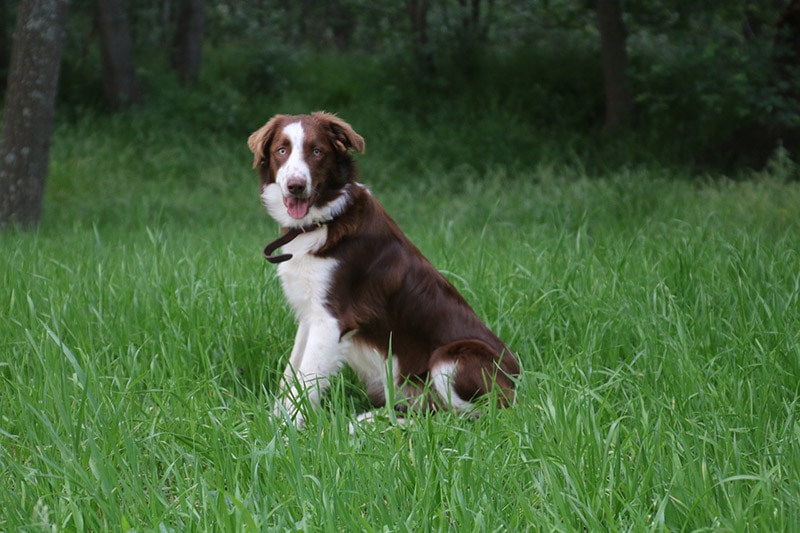Cavalier King Charles Spaniel Male vs Female: Main Differences (With Pictures)
By Kit Copson
Updated on
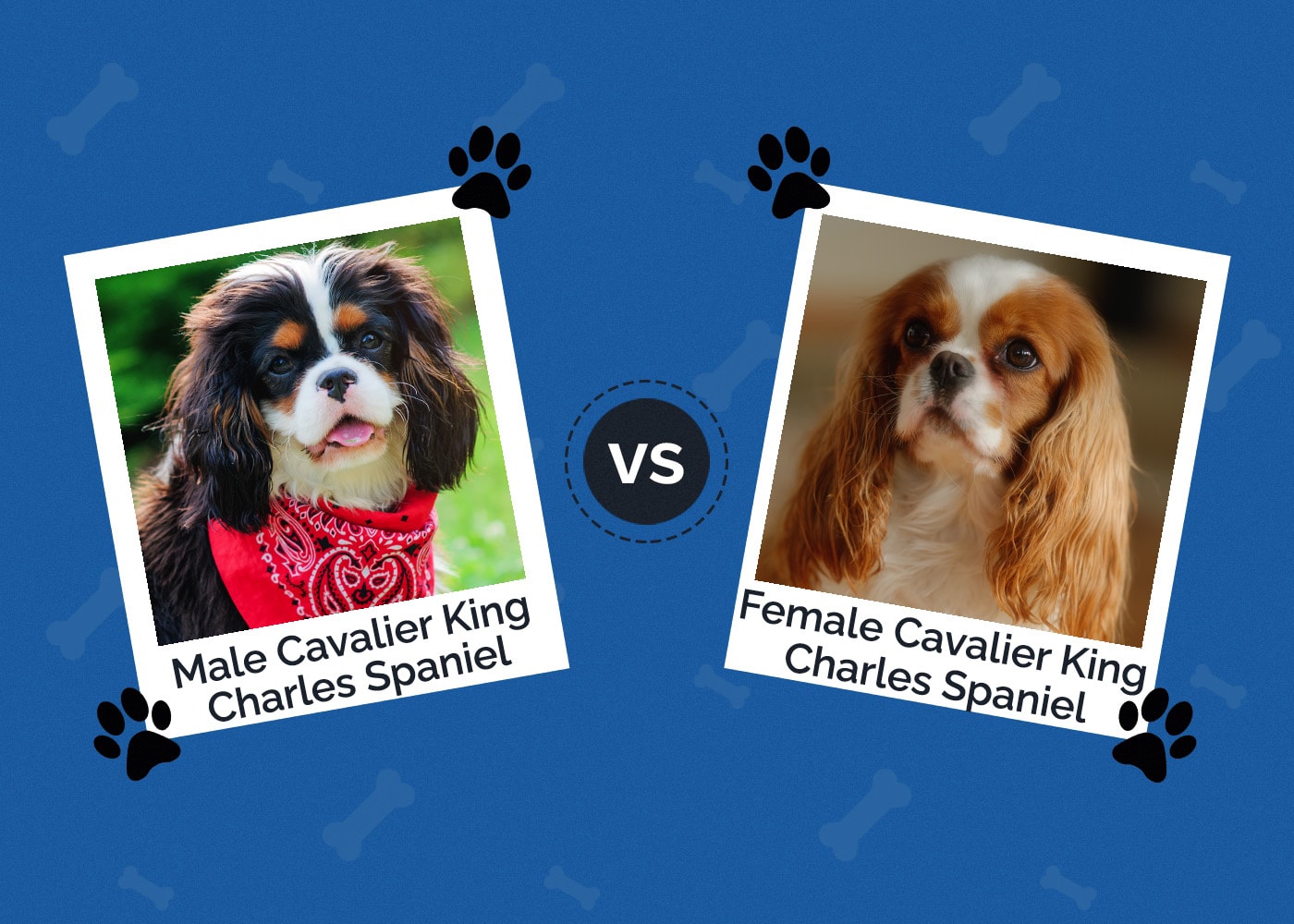
When enjoying a walk in the park or your local nature reserve, one of the dog breeds you’re highly likely to cross paths with is a Cavalier King Charles Spaniel. These people-loving little dogs are great choices for all kinds of dog lovers from single people to big families because they’re typically very comfortable and content in the company of humans and other dogs.
But are there any significant differences between male and female Cavalier King Charles Spaniels? There isn’t much scientific research into how male and female dogs differ in terms of behavior or temperament, but some dog parents have noticed certain differences.
In this post, we’ll explore anecdotal evidence and biological differences between male and female Cavalier King Charles Spaniels.
Visual Differences

At a Glance
- Average height (adult): 13 inches
- Average weight (adult): 13–18 pounds
- Average height (adult): 12 inches
- Average weight (adult): 10–18 pounds
Cavalier King Charles Spaniel
Standing at around 12–13 inches tall and weighing in at 10–18 pounds, the Cavalier King Charles Spaniel is considered a member of the Toy group of dog breeds by the American Kennel Club. The AKC accepts four standard Cavalier King Charles Spaniel colors—black and tan, black and white, Blenheim, and ruby. Tan markings are the only markings considered standard.
These dogs originated in Britain, and their ancestors were the Spaniel dogs known as “Blenheim Spaniels” that inhabited King Charles II’s homes. Centuries later, in the early 19th century, a man named Roswell Eldridge championed the return of these long-faced Spaniels—even going so far as to offer rewards to breeders who could produce dogs that closely fit the original description. The breed was recognized by the British Kennel Club in 1945.
Male Cavalier King Charles Spaniel Overview
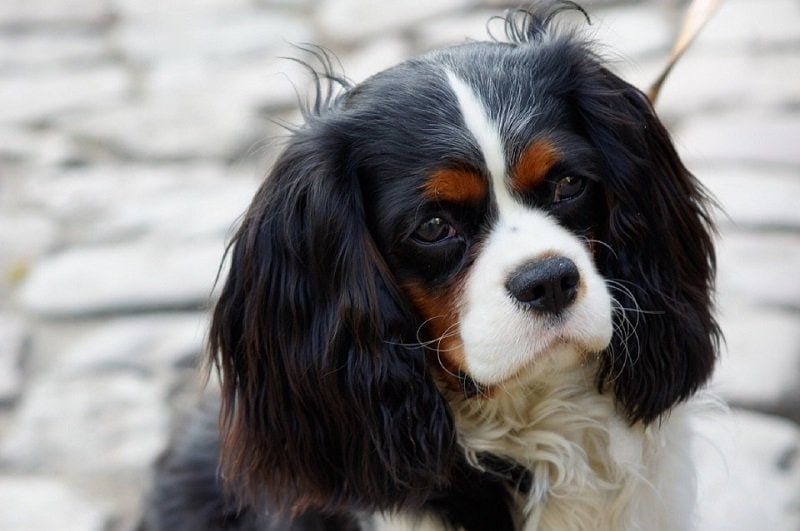
Personality / Character
The Cavalier King Charles Spaniel is a wonderful combination of grace and an unbridled, fun-loving temperament that makes them much loved companion dogs around the world. According to author and dog trainer Michele Welton, male dogs are typically less moody and more chilled out in temperament, but they can be somewhat “pushy”.
Dr. Becker at Blue Rose Cavaliers notes that male Cavalier King Charles Spaniels tend to be rather affectionate and humorous in nature. One of the biggest differences between male and female dogs is apparent when they’re unspayed or unneutered.
Unneutered male dogs may become more territorial and aggressive towards other male dogs when reacting to the female dog’s heat cycle, but these behaviors tend to decrease over time post-neutering.
It’s important to remember that these personality traits are just generalizations and do not guarantee that your male Cavalier King Charles Spaniel will be as described. You could just as easily get a male that’s a little more independent and a female that’s not moody at all!
Training
The easygoing, eager-to-please Cavalier King Charles Spaniel is super easy to train thanks to their quick brains. These personality traits mean that they often do well in obedience challenges and other canine sports. They’re also sociable little dogs so are unlikely to object to spending more time with people and other dogs. Lots of positive reinforcement and praise should get your male Cavalier learning in no time.
Male dogs tend to mature a little less quickly than females, so you might find yourself spending a bit more time training your male Cavalier than you would your female, but there’s no way of knowing until you meet your dog and get to know their personality.
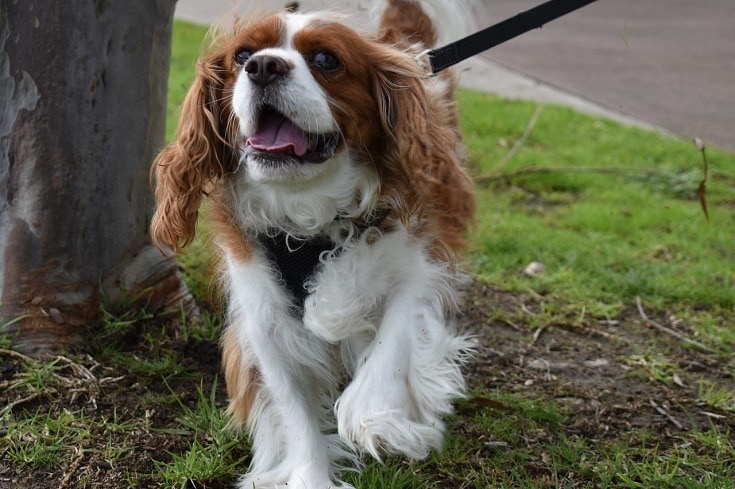
Health & Care
Cavalier King Charles Spaniels are prone to health issues including eye and ear problems, heart conditions like mitral valve disease, luxating patellas, poor teeth condition, curly coat/dry eye syndrome, Chiari malformation and Syringomyelia, and episodic falling. Intact male Cavalier King Charles Spaniels are also at risk of testicular cancer and prostate cancer.
As for grooming, a Cavalier needs frequent brushing to keep their long coats in good condition and at least monthly nail trimming to prevent them from becoming overgrown.
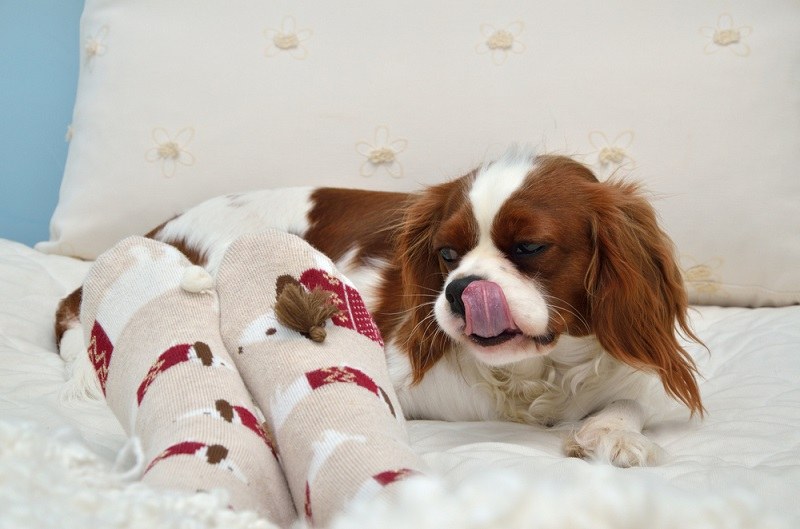
Breeding
The intensive breeding of Cavalier King Charles Spaniels has resulted in these dogs carrying more harmful genetic variants than other breeds, according to Science Daily. This has left Cavalier King Charles Spaniels more at risk of being predisposed to dangerous heart conditions like mitral valve disease. This is something to be aware of if you’re planning on acquiring a Cavalier King Charles Spaniel.
- Reputed to be very affectionate and friendly
- Great family dogs
- Good-humored and fun-loving
- Easy to train
- Generally sociable with strangers and other dogs
- Prone to several health conditions
- Unneutered males more prone to territorial behavior
Female Cavalier King Charles Spaniel Overview

Personality / Character
Female Cavaliers make wonderful family dogs, just as male Cavaliers do, and share many traits with males, particularly being loyal and family oriented. Dog trainer Michele Welton describes female dogs as being more prone to moodiness and emotional instability than males and a little more reserved in sharing their affections. If this is the case, female Cavaliers may be a little more independent than males.
That isn’t to say that female Cavaliers are not loving or friendly—just that they might be less upfront about it than males. This really depends on the dog in question though—there are never any guarantees!
When unspayed, your female Cavalier may become more irritable or anxious and more likely to fight with other dogs when competing for male attention in heat. This is why it’s worth considering getting your female Cavalier spayed.
Training
You shouldn’t have much of a problem training your female Cavalier. Female Cavaliers may be slightly quicker to learn when it comes to training than males. This is because female dogs tend to mature faster, which naturally makes them a bit more responsive to training.
Health & Care
With the exception of testicular and prostate cancer, female Cavaliers are prone to the same health conditions as males. Unspayed females are more likely to suffer from ovarian and uterine cancers, breast cancer, and pyometra. Grooming needs are also the same as those of male Cavaliers—regular coat brushing, teeth cleaning, and toenail trims are key to keeping them comfortable and happy.

Breeding
As mentioned above, intensive Cavalier King Charles Spaniel breeding has led to a predisposition for certain health issues like heart conditions.
- Full of personality
- Friendly and sweet-natured
- Great family dogs
- May be slightly easier to train
- May be less hyperactive
- Can be more prone to mood swings
- Unspayed females prone to irritability
 Which Gender Is Right for You?
Which Gender Is Right for You?
In our opinion, when it comes to choosing a dog, meet them and get to know them a little before making your decision rather than going solely off gender. With gender, there are no promises or guarantees—only generalizations and the word of others.
Although male dogs are generally considered a bit clingier and more affectionate and females are generally considered to be more reserved and mature, that in no way means that any male or female dog you get will match this description. So, our advice to you is to meet the dog to find out whether they’d be a good fit for you.
Featured Image Credit: (L) Maria Evseyeva, Shutterstock | (R) Mark Prytherch, Shutterstock




